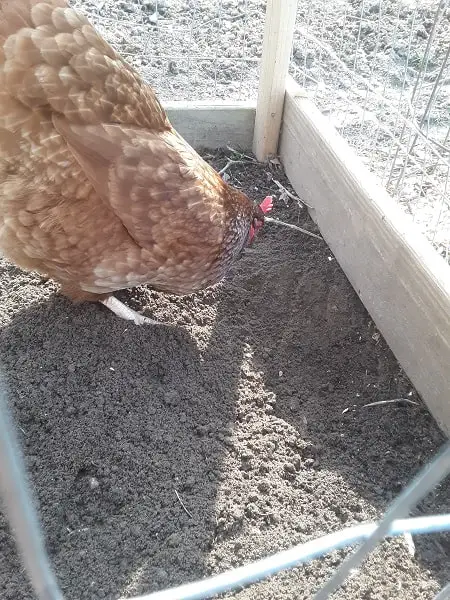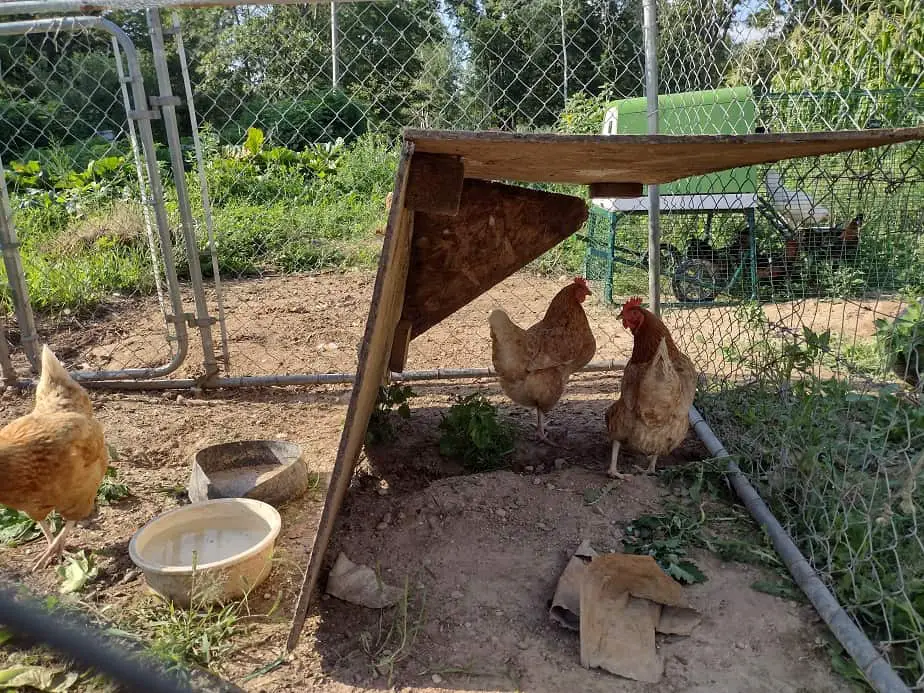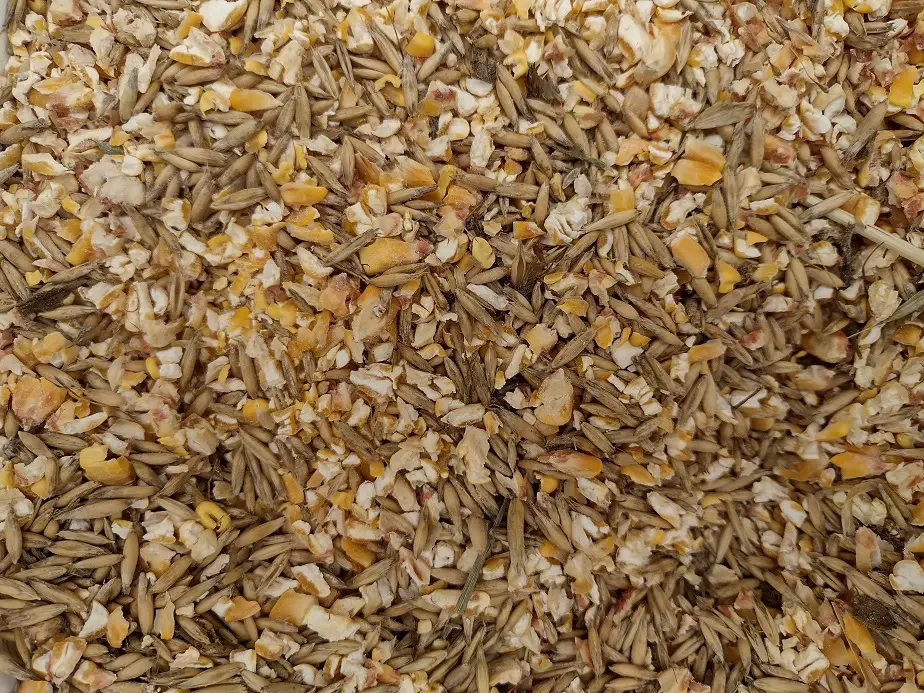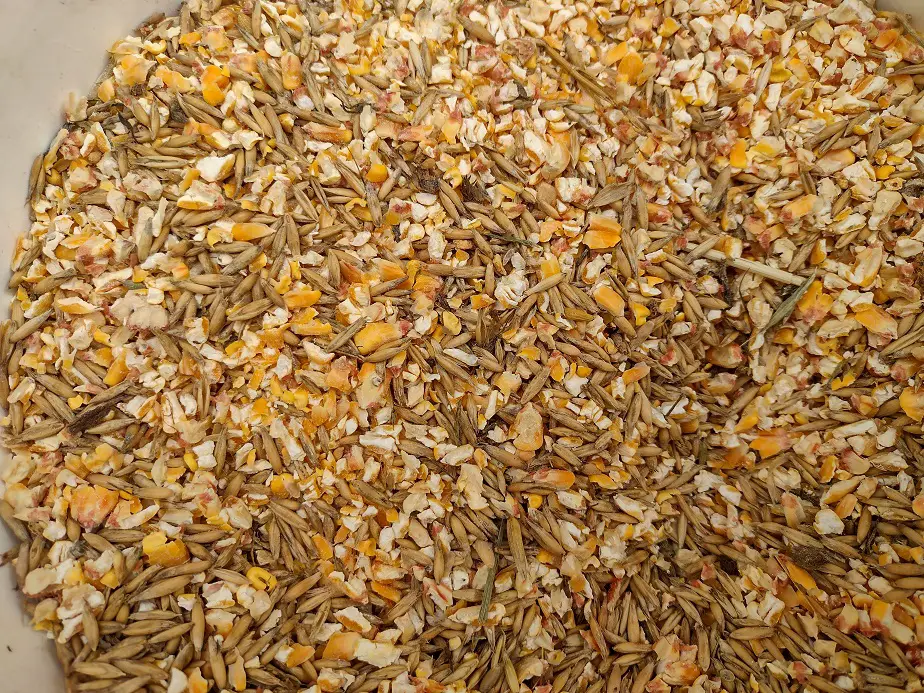I’m the local chicken guy. When folks have questions, I tend to have answers.
Chickens do not need scratch grain. It’s often slightly cheaper, but a lesser-quality food source that results in poor growth and fewer eggs. Scratch grain can have benefits, but there are many better and cheaper options. Scratch is not commonly used by many chicken owners.
Scratch isn’t all bad. It can be useful at times if you use it right.

Is scratch Grain Bad for Chickens?
Scratch grain is not necessarily bad for chickens. It’s a low-protein, low-fiber, high-carbohydrate feed usually consisting of main corn with some wheat and other grains. The makeup of scratch varies by region, but it’s always grain. It’s usually a few dollars cheaper per bag than chicken feed.
Scratch is usually mostly corn. So is chicken feed. Chicken feed is up to 80 percent yellow corn. there’s nothing unhealthy about the ingredients of scratch. it’s just not a balanced diet. A proper diet contains more minerals, vitamins, protein, and fiber.
If you use scratch as a primary feed, your birds will be unhealthy. Scratch grain usually lacks fiber. Because of that, birds raised on scratch have more digestion issues, including intestinal worms and nutrient absorption issues. Additional fiber is needed for healthy birds.
Scratch is low in protein, which stunts the growth and egg-laying performance of chickens. Growing and laying birds usually need about 16 percent protein to keep pace. Most scratch has around 9 to 11 percent protein, and it’s not a complete protein spectrum. It’s lacking most of the essential amino acids.
Here are the amino acids (building blocks of protein) chickens need most.
- Methionine
- Lysine
- Threonine
- Tryptophan
- Isoleucine
- Arginine
- Valine
Methionine and Lysine are the most essential and needed in the highest amounts. They are also greatly lacking in common grains. They are usually sourced from beans, peas, sunflower seeds, or meat-based products such as fish meal or insects.
The other main nutrient lacking in scratch is calcium. Chickens need a lot of calcium for their fast-growing bone structure. Laying hens need calcium to form eggshells and will actually deplete calcium from their bone structure if not enough is available. Chickens need a source of supplemental calcium to be healthy.

How to Use Scratch Grains
Scratch grains are often used to encourage natural pecking behavior in an environment where they wouldn’t otherwise. It helps chickens get exercise and helps them to get minerals and grit from the soil. It can also be used as an energy supplement for free-range chickens.
A lot of people give scratch grains to poultry as a treat, just to be nice to them. They do like it a lot, although they usually prefer just corn. Often, the birds will pick out the corn and leave the rest. There’s nothing wrong with giving your birds a treat if it pleases you. Just don’t overdo it.
Scratch can be used as the primary energy source in a diet. After all, chicken feed is mostly grain. You would have to ensure that your birds have a good source of protein, fiber, and calcium. Plus, they will still need other minerals and vitamins. You can do that easily though.
All the fiber and vitamins chickens need can be provided through grass clippings. The soil they constantly peck at provides with the minor minerals they need. They need about 10 to 15 percent of their diet to be a solid protein source. If you have a small flock, you may be able to get enough protein from table scraps.
Calcium can be supplemented by drying and crushing eggshells and adding them to your bird’s feed. All in all, If scratch was significantly cheaper, I may be able to use it as a primary feed source if I had to, provided I could keep their diet balanced by adding other things. I will say, it’s usually less productive.
If you are looking for a cheaper option for your birds, I suggest looking for cheap corn (it’s cheap in my area anyways) and fermenting it to increase the protein and vitamin content. Still, they will need additional supplementation.
I used to feed my free-range birds a little corn as their primary feed and expected them to forage for the rest. I didn’t get a lot of eggs for the number of birds I had, but it worked at the time.

Is Scratch Grain Worth it?
Scratch grain isn’t often worth it nutritionally. For the money, it’s often more economical to just use a pre-formulated feed. Often times there is little difference in price between the two and with the lesser performance expected, it’s just not going to be worth it unless you can get it very cheap.
Right now, Scratch costs almost as much as a budget chicken feed. In my area, cheap scratch is 30 cents a pound and cheap chicken feed is 35 cents a pound. That comes to less than 2 cents more per hen per day. Knowing that they will lay more eggs, it’s definitely worth it to just buy the feed in my opinion.
I’ve tested it myself and was getting around 2 eggs a week per chicken when feeding mostly scratch. On the cheapest feed, I was getting 4 per week per hen. For about 15 percent more cost, I got twice the amount of eggs. That’s an extra dozen eggs for 60 cents. Well worth is to me in the current situation.
As feed prices fluctuate and my situation changes, I may decide to do something else, and that’s fine. Make smart decisions and do what you can do.

